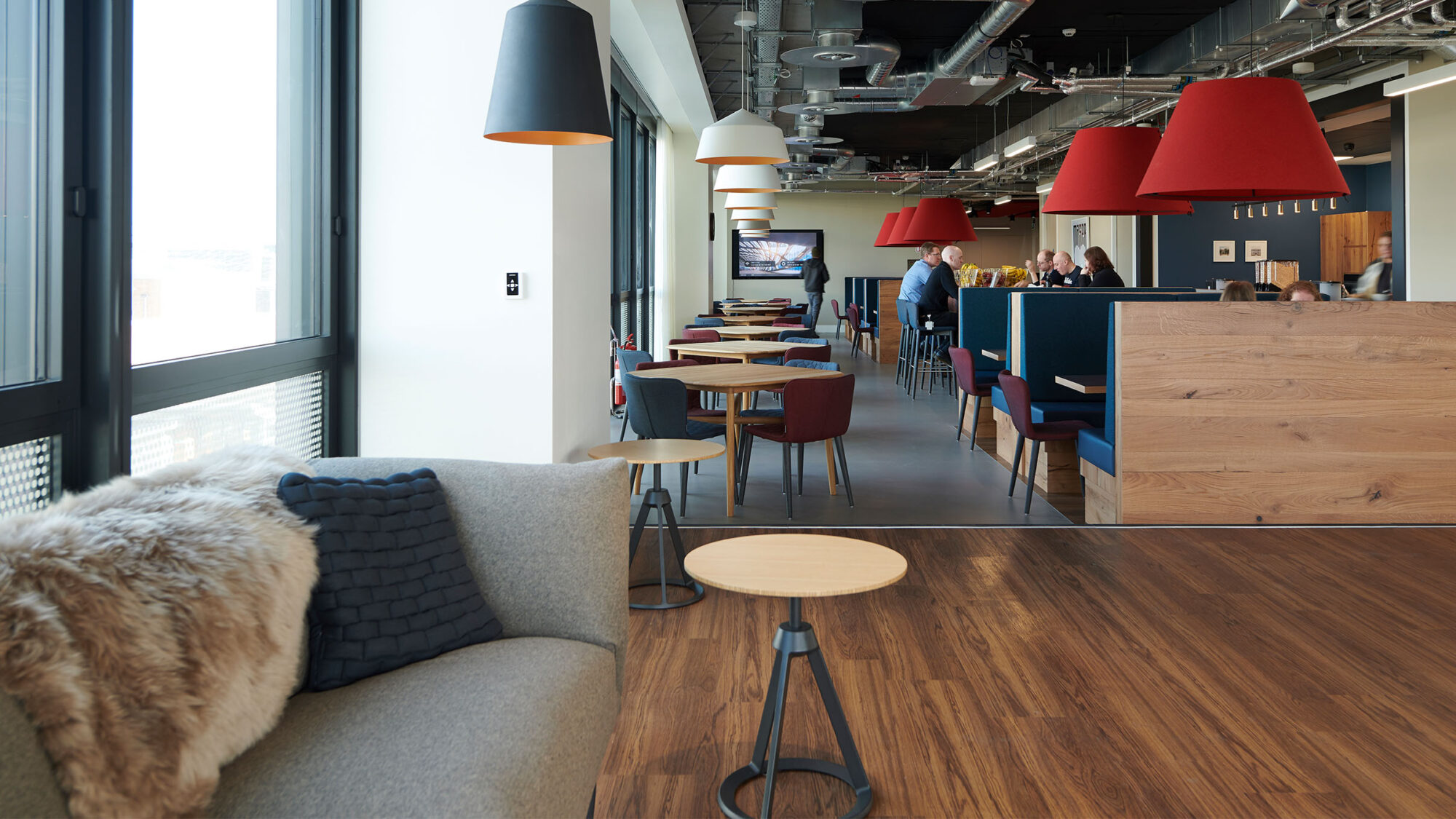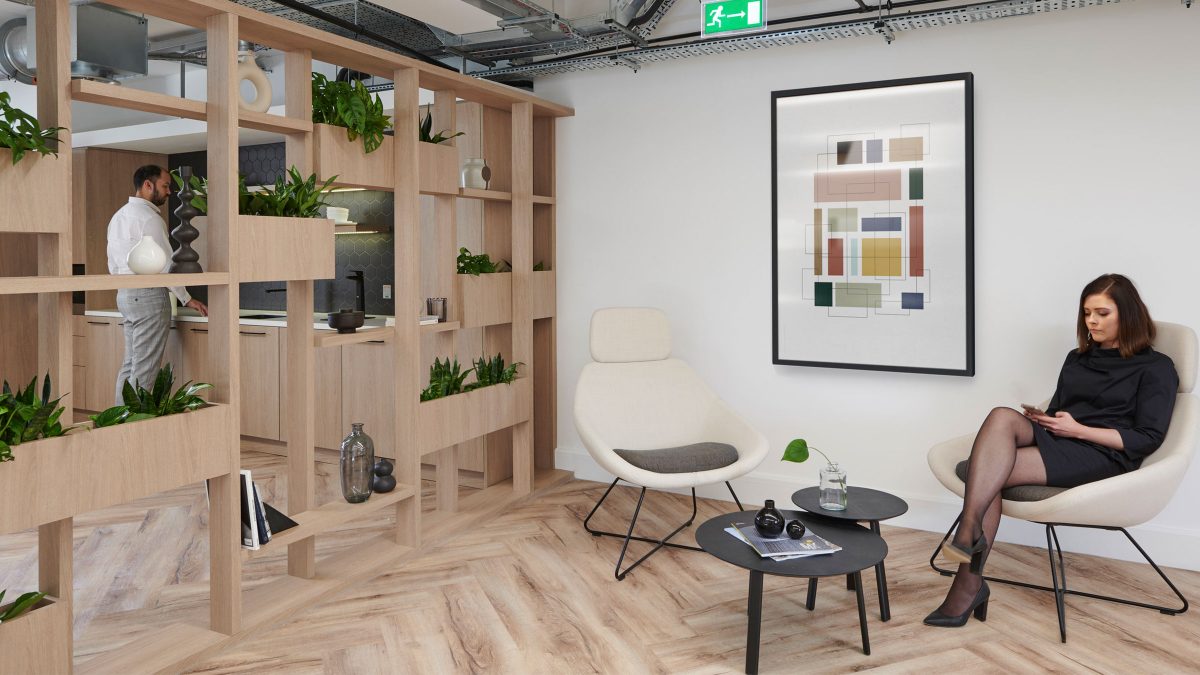










Workplace Strategist, Steve Gale, explores why hospitality is the best ingredient within design experience that keeps people satisfied.

The definition of hospitality is, “The friendly and generous reception and entertainment of guests, visitors, or strangers”. This can be felt in the design experience of any decent hotel you can think of, but it doesn’t stop there – it’s unstoppable.
Hospitable places are comforting. Comfort is the sort of thing you expect in your local pub but not in a police station.
We know what hospitable places are. For instance, a bus shelter keeps you dry and a changing room will hold your kit. It’s also fair to say that a restaurant should make you feel welcome. Hospitality can be a big factor within the design experience of a space. It certainly seems hospitality is more apparent these days. So is hospitality expanding into boring spaces? Perhaps hospitality is transforming spaces and allowing people to dwell, de-stress and interact? It appears that way.
We can also look at the archetypal dentist’s waiting room. I have a life-long fear of dentists that was created in the awkward white and soulless spaces of waiting rooms. However, things have now changed along with the design and therefore experience of these spaces. Now my dentist invites me into a sunny lounge with sofas, today’s papers, fresh coffee and fast wi-fi.
The design experience of office upgrades are influences of America. As America is a country that put cup holders in cars. Not to mention waste disposal in kitchen sinks. Now soft furniture in the workplace is OK in a British office. This accommodating nature can be seen beyond the flashy reception desks. You can see it in casual meeting areas and cafeterias. In big organisations the promise of biscuits and burnt coffee for meetings has turned into supermarkets without tills. Full catering is no longer just for multi-nationals the size of Unilever.
People in these environments have a particular experience. They are treated more like guests than employees. Similarly this is what the hospitality industry is about. However, for many of us, the difference between our office and upmarket hotels are the desks which diminish each year as the workplace changes.
Why is hospitality invading the workplace? Partly because the American Dilbert-like cubicle farms encompassed a design experience that was a turn-off for talent in Silicon Valley. In Silicon Valley there is stiff competition for good people. The bar is raised to the point where almost all needs are catered for on tech campuses. Every leisure activity is accommodated. Health and wellbeing needs are serviced. Food and drink are also on offer competing with the best prices in town. That’s if there is any cost to the consumer at all.
This is corporatized hospitality. It’s on a grand scale but aimed at regular employees now, not only clients. Some of the facilities over-serve. As a result legends of excess and fantasy have been created. There are more curly slides connecting floors and ski-lift meeting rooms now. Stakes are high in the tech sector. Big names are fighting for the same people. At the moment it seems this type of bribery works.
It’s not just about retention and stealing staff. There is a much more practical reason. This is about innovation and knowledge exchange. Now we have communication apps and we have portable tools. As a result the workspace can offer new opportunities.
For most ‘knowledge workers‘ the only reason to turn up at the office is to rub shoulders with people for guidance, swapping ideas, plotting and hearing stories. Therefore we can now reconfigure things to make meetings, conversations and entertainment the main attractions. Places for production and thinking can be moved around the periphery. Knowledge sharing is still vital. Knowledge sharing is still the cutting edge of success.
Today I heard an interview with Nobel Laureate for chemistry, Dr Richard Henderson, from Cambridge, who was speaking about how he first learnt about his prize winning technique. He learned it from a colleague in a completely different subject area. He said:
“There’s a lot to be gained from chatting to people over coffee, lunch and having conversations with people with different disciplines. Often the big breakthroughs come from the boundaries between two disciplines where people are meeting. Those with their heads in the sand make long-term progress in some areas, but the big revolutionary steps forward often come from the cross-boundary collaborations”.
True that, Mr Henderson!
Workplace Strategist